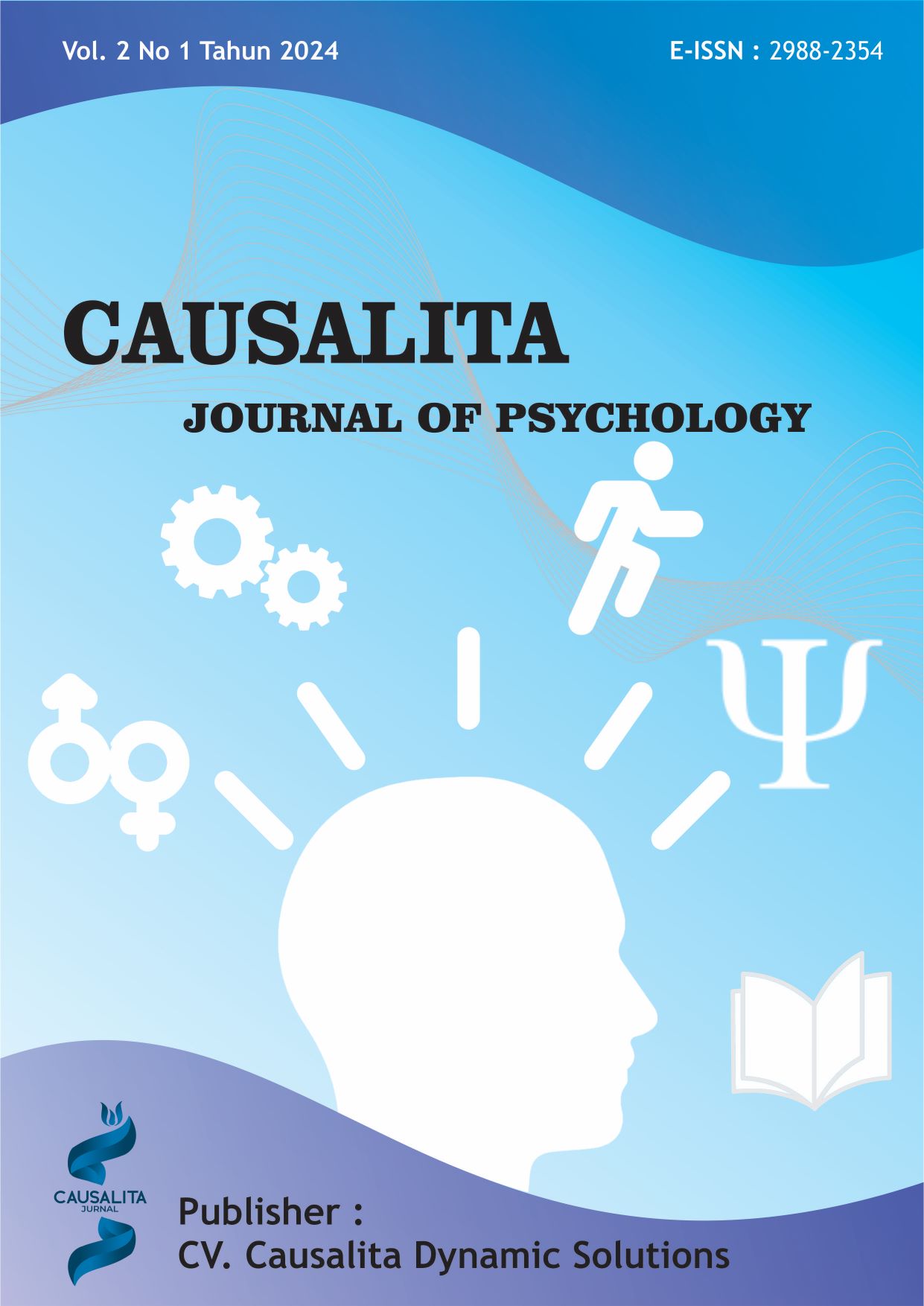Dynamics of The Lonelinees in Teenagers Addicted to Social Media
DOI:
https://doi.org/10.62260/causalita.v2i1.220Keywords:
Social media addiction, loneliness, attachmentAbstract
The internet has become an integral part of human life, including in Indonesia, with teenagers as one of its active users. Teenagers use the internet for various purposes such as studying, playing games, and social media. This research aims to describe social media addiction and the dynamics of loneliness in adolescents who are addicted to social media. This research uses a qualitative approach with two subjects who are social media addicts. Data was collected through structured interviews with subjects and those closest to them. The results showed that both subjects spent significant time on social media, which affected their social life and daily activities. Loneliness was found to be a major factor driving excessive use of social media. Both subjects felt lonely and found escape in social media. Family relationships and a less supportive social environment exacerbate this condition. This research suggests the need for interventions to reduce social media addiction and improve the quality of adolescents’ social relationships.
References
Al-Menayes, J. J. (2015). Dimensions of social media addiction among university students in Kuwait. Psychology and Behavioral Sciences, 4(1), 23-28.
Anatasya, E., Rahmawati, L. C., & Herlambang, Y. T. (2024). Peran Orang Tua Dalam Pengawasan Penggunaan Teknologi Digital Pada Anak. Jurnal Sadewa: Publikasi Ilmu Pendidikan, pembelajaran dan Ilmu Sosial, 2(1), 301-314.
Andreassen, S, C. (2015). Online Social Network Site Addiction : A Comprehensive Review. Springer International Publishing. 2: 175 – 184.
Bandura, A. (1997). Social Learning Theory. New York: General Learning Press.
Blackwell, D., Leaman, C., Tramposch, R., Osborne, C., & Liss, M. (2017). Extraversion, neuroticism, attachment style and fear of missing out as predictors of social media use and addiction. Personality and Individual Differences, 116, 69-72.
Chóliz, M. (2012). Mobile-phone addiction in adolescence: the test of mobile phone Dependence (TMD). Progress in Health Sciences, 2(1), 33-44.
De Jong-Gierveld, J., & van Tilburg, T. G. (2006). A 6-item scale for overall, emotional, and social loneliness: Confirmatory tests on survey data. Research on aging, 28(5), 582-598.
Hombokau, Z. M., & Sarajar, D. K. (2024). Kesepian dengan Kecenderungan Adiksi Media Sosial Penggemar K-pop di Indonesia. Innovative: Journal Of Social Science Research, 4(3), 18071-18079.
Hurlock, E. B. (1978). Perkembangan anak jilid 2 edisi keenam. Jakarta: Erlangga.
Jick, T. D. (1979). Mixing qualitative and quantitative methods: Triangulation in action. Administrative science quarterly, 24(4), 602-611.
Oktawati, W., & Yusuf, Y. (2017). Kenakalan Remaja Di Desa Sungai Paku (Studi Kasusus SMP 4 Kampar Kiri Kabupaten Kampar) (Doctoral dissertation, Riau University).
Rahimaniar, I., & Nuryono, W. (2021). Studi Kepustakaan Tentang Faktor Penyebab dan Penanganan Kecanduan Media Sosial. Jurnal BK UNESA, 12(2), 185-196.
Schou Andreassen, C., & Pallesen, S. (2014). Social network site addiction-an overview. Current pharmaceutical design, 20(25), 4053-4061.
Young, K. S. (2010). Internet addivtion: a handbook and guide to evaluationandtreatment. Canada: John Wiley & Sons, Inc
Young, Kimberly. S & Abreu, Cristiano. N. D. (2017). Kecanduan Internet Konseling dan petunjuk untuk evaluasi dan penanganan. Yogyakarta: Pustaka Pelajar.
Downloads
Published
Issue
Section
License
Copyright (c) 2024 Nadia Aderiani Khairizal , Rida Yanna Primanita

This work is licensed under a Creative Commons Attribution-ShareAlike 4.0 International License.






